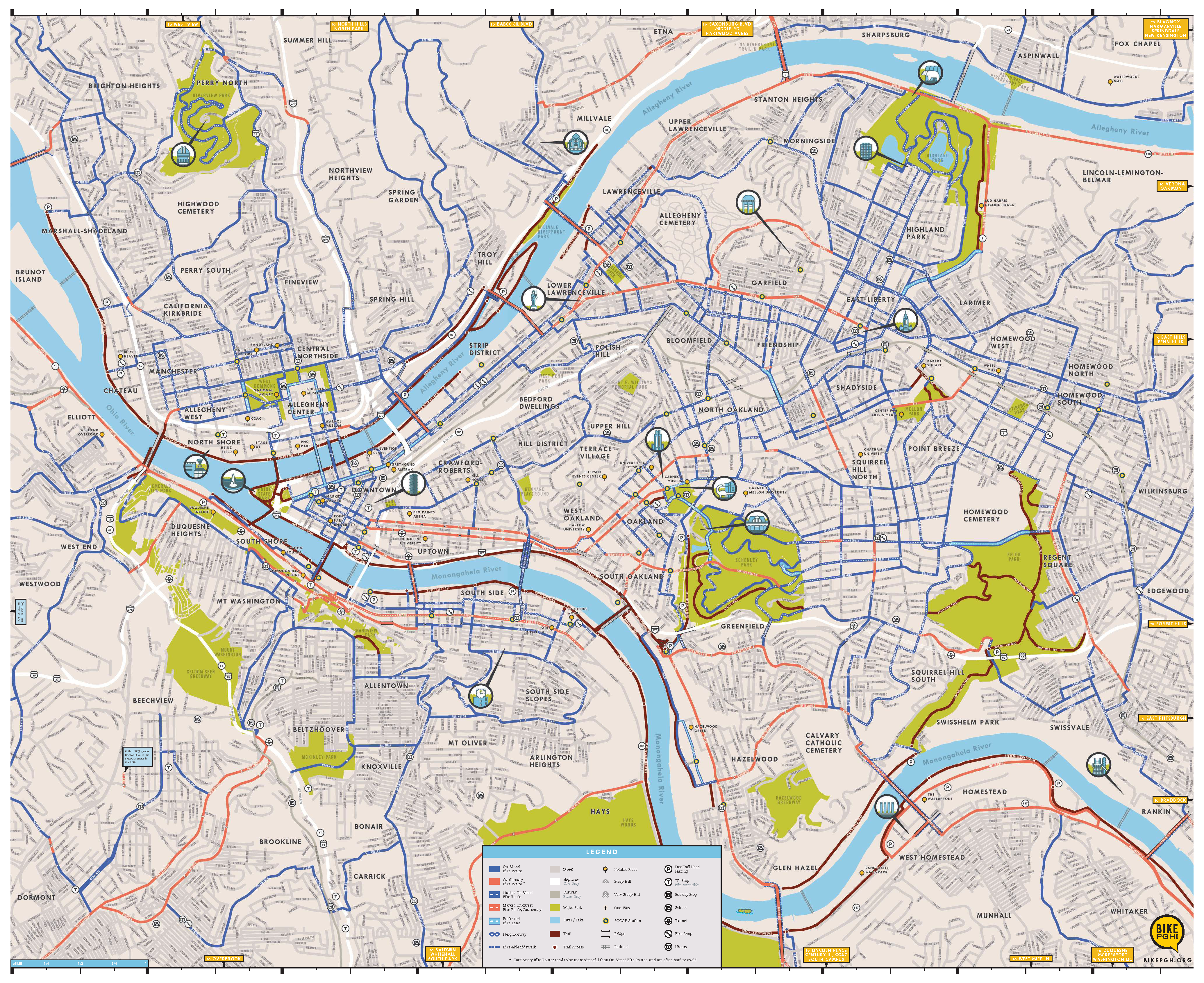A Brief History of Pittsburgh, Host City for MLA ’25
Submitted by: Alexa Silverman, 2025 Local Assistance Committee
MLA ‘25 Welcomes You to Pittsburgh!
The Gateway to the West. The Iron City, the Steel City, the City of Bridges. Affectionately, the ‘Burgh. These names all belong to the part midwestern, part mid-Atlantic city hosting this year’s annual Medical Library Association Conference from April 29 – May 2: Pittsburgh, Pennsylvania! A mid-sized city of 300,000+ residents located in southwestern Pennsylvania, Pittsburgh has acquired a legacy of interesting nicknames that mirror the city’s different economic, social, and political transformations.
Situated at the confluence of the Allegheny, Monongahela, and Ohio Rivers, Pittsburgh’s geography has long informed the region’s history. Visit Pittsburgh provides a great summary of 267 years of industry, culture, and regional innovation; notably, the rise and fall of the steel industry for which Pittsburgh is most known. Pittsburgh Quarterly also offers a detailed geographic and military history of the city’s establishment and economic transformation(s).
Contemporary Pittsburgh, centered around its universities and hospitals, is a beacon for education, technology, and notably, medical innovation. As the MLA ‘25 theme is “Bridging Tradition and Innovation,” this post highlights a brief history of some of Pittsburgh’s renowned medical achievements.
Key Medical Advancements: Early History
As an institution, the University of Pittsburgh’s recorded medical history begins in 1886, when “a group of Pittsburgh physicians founded the Western Pennsylvania Medical College in response to the increasing need for quality medical care and training in the burgeoning city. Later, “the medical college became affiliated with the Western University of Pennsylvania, later renamed the University of Pittsburgh, and moved from Polish Hill to its new home in Pennsylvania Hall in Oakland in 1911.”
Throughout the 20th century, the occupational industries in Pittsburgh changed. As the steel and glass industries shifted profit, medical knowledge, care practices, and advancements centralized. Pitt developed its University Medical Center (UPMC) in the 1930s, combining multiple hospital systems into what is now Magee-Womens, Presbyterian, and the Children’s Hospital. This communicative, encouraging, and open-minded medical research culture strengthened throughout the mid-to-late 20th century.
1940s-1950s:
In 1953, after five years of research at Pitt’s School of Public Health, Jonas Salk developed the first successful polio vaccine. Salk’s vaccine was licensed in 1955; just two years later, “annual cases dropped from 58,000 to 5,600, and by 1961, only 161 cases remained.” Salk became a household name and remains so due to his mitigation of the 20th-century polio epidemic.
1960s-1970s:
The UPMC also heralds the advancement of successful liver and heart transplants from the late Dr. Thomas E. Starzl’s research in anti-rejection medicines. Starzl performed the state’s first heart transplant at Pitt in 1968, earning him the nickname the “Father of Transplantation.”
In the 1960s and 70s, faculty Dr. Peter Safar pioneered achievement in resuscitation science. Dr. Safar, known as the “Father of CPR,” also “introduced the 1st ambulance service (Freedom House Ambulance Service) staffed by paramedics with medical training beyond basic first aid.” This program was particularly notable for its accessible prehospital focus that aided Black communities in the Hill District who were barred from receiving equitable medical treatment. Safar and his colleague Dr. Ake Grenvik additionally “established the 1st multidisciplinary critical care training program (MCCTP). The MCCTP now provides integrated training for accredited critical care programs in anesthesiology, internal medicine, neurology, pediatrics, and surgery. The genius and drive of those medical pioneers gave the world CPR and helped shape the field we now call critical care medicine.”
1980s:
The late Dr. Freddie H. Fu developed UPMC’s internationally acclaimed Sports Medicine program, founding Western Pennsylvania’s first sports program in 1986. Since then, he “expanded and advanced UPMC Sports Medicine to become one of the largest, most comprehensive clinical and research programs in the world.” Dr. Fu was also known for his revolutionary ACL reconstruction research.
2000s Onward
At the turn of the 21st century, Oakland’s Magee-Women’s Hospital “pioneered the use of digital mammography,” contributing to its frontrunner status in advancing women’s healthcare. Magee boasts “the highest funded obstetrics and [gynecology] department in the nation by the National Institute of Health.”
See You in Pittsburgh for MLA ’25!
In the same way that Pittsburgh is born of steel and sports, these – and many more – medical firsts have both characterized this city’s past and informed its present. We’re excited to welcome you to our city for MLA ’25. Registration and the official hotel room blocks are now open!



